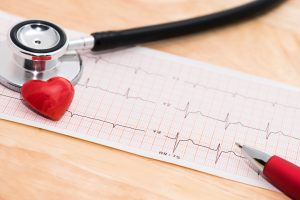Heart Disease After Sepsis: American Heart Month
February 7, 2019
 Heart disease is the leading cause of death in the United States and around the world, among both men and women. There are actions we can take to help protect our heart and reduce the risk of heart disease, but sometimes, heart disease or damage to the heart happens no matter how conscientious we are. February is American Heart Month, a special time to discuss heart-related issues and how they can affect anyone.
Heart disease is the leading cause of death in the United States and around the world, among both men and women. There are actions we can take to help protect our heart and reduce the risk of heart disease, but sometimes, heart disease or damage to the heart happens no matter how conscientious we are. February is American Heart Month, a special time to discuss heart-related issues and how they can affect anyone.
According to a study published last year, sepsis survivors have a higher risk of having a heart attack or stroke within one month after their discharge from the hospital. One-quarter (26%) of the patients in the study were affected within a week of discharge and half (51%) within 35 days. Interestingly, younger patients, aged 20 to 45 had a higher risk of a heart attack or stroke than did those over 75. “More close monitoring and pharmacologic prevention may be required for these patients at the specified time,” the authors wrote.
These findings reinforce the effects from sepsis and septic shock are long-reaching, and that hospital discharge does not mean everything goes back to normal. Researchers don’t know exactly why this higher risk for heart problems exists, but it’s likely related to the extra strain on the heart during the illness and coagulation (clotting) issues, among other issues.
Unfortunately, the risk doesn’t go away completely after one month. Other studies have shown that although the risk is not as high, sepsis survivors do have over a 4 times higher chance of developing acute coronary heart disease within the first year of survival, and it still remains a bit higher (1.18-fold) for the next three years.
So, what does this mean for sepsis survivors? Close monitoring after discharge is important. Sepsis survivors are at risk of contracting more infections and developing sepsis again. In addition, they should watch for anything that seems out of the ordinary, including signs and symptoms of heart disease or heart failure. They include:
- Being short of breath without physical exertion
- Fatigue and weakness
- Difficulty exercising or performing physical activity
- Rapid or irregular heartbeat
- Coughing
- Chest pain
- Swelling in your legs, ankles, or feet (edema)
If you experience any signs of heart problems, see your doctor as soon as possible and mention that you are a sepsis survivor. If you have any signs of a heart attack or stroke, call 911 for immediate medical help.
Heart attack:
- Chest pain, often radiating to the back, shoulder, arm, or jaw
- Sweating
- Shortness of breath
- Dizziness, light headedness
- Feeling of impending doom
Stroke:
- Weakness on one side of the body
- Difficulty speaking or understanding
- Changes in vision
- Confusion
- Difficulty walking, falling
- Unconsciousness
Many sepsis survivors recover completely and never experience any effects from their illness. However, it is important to know what complications could occur and what to watch for.
Sepsis Alliance has dedicated the second week of February to sepsis survivors. To learn more about issues related to surviving sepsis, visit our Life After Sepsis page, where you will find links to post-sepsis information, letters for doctors and other professionals, checklists, and more.





























